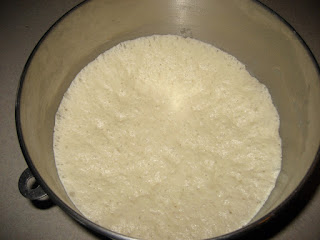I have a bone to pick with red velvet. One does not simply make red velvet by adding red food coloring to an otherwise vanilla batter and call it good. Red velvet is so much more than it's color. Of course, I can't really blame anyone for this mistake because there is so much misinformation out there on what red velvet actually is. So, to set the record straight, and for my own peace of mind, I am going to set in stone (or bits and bytes) what I firmly believe red velvet to be.
After searching the internet for many red velvet recipes in an attempt to come to some sort of consensus, I concluded that red velvet is a mildly chocolate cake with background notes of both vinegar and buttermilk, also containing some form of red food coloring to heighten the already-present red anthocyanin present in the cocoa powder. There, I've said it. Red velvet is first and foremost a chocolate product. True, it is not as chocolaty as an Oreo©, but it is chocolaty nonetheless.
Well, on to the point of this post. The internet is riddled with red velvet in the form of cakes, cupcakes (shudder), brownies, crepes, pancakes, waffles, cake-mix cookies, etc. Don't get me wrong, there is nothing wrong with these things (except for the cupcakes. I don't like cupcakes), but I don't have a great love for any of them. What I really wanted was a cookie that I could roll out and cut into shapes, like sugar cookies. And don't you dare tell me that I can just put red food coloring into a sugar cookie. Didn't we already go over the fact that red velvet is chocolate at heart? No, I discovered that if I wanted a rolled red velvet cookie I would need to make my own recipe from scratch. So I did.
One more comment before I begin; it took me many tries to come up with this recipe, mainly because I wanted to get a good amount of chocolate flavor without making the cookie too brown. The solution is to use black cocoa, which is highly dutched or alkalized cocoa, in conjunction with natural cocoa powder. If you don't want to buy black cocoa you could probably get away with just using normal dutched cocoa, but please do not just use natural coca by itself. The flavor just isn't the same.
—Sam













